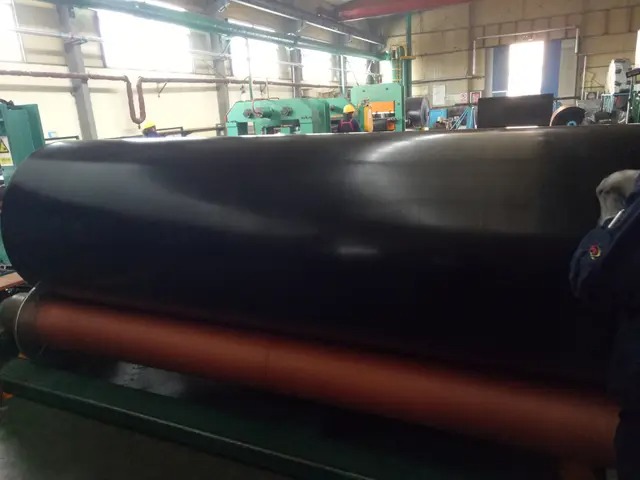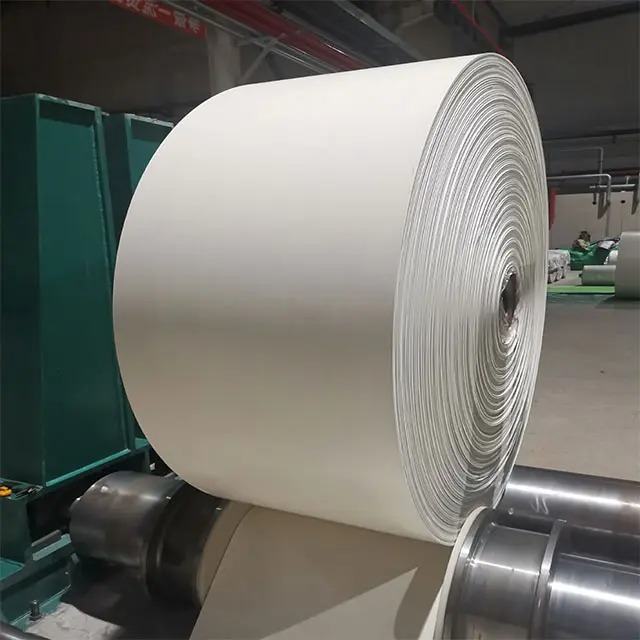Views: 195 Author: Site Editor Publish Time: 2025-08-18 Origin: Site









Rubber conveyor belts are integral to numerous industries, from mining and manufacturing to food processing and logistics. One of the most critical questions engineers, plant managers, and maintenance supervisors ask is whether these belts can maintain their performance under extreme temperature conditions. Whether dealing with scorching heat in steel foundries or sub-zero environments in refrigerated warehouses, the answer lies in the belt’s design, material composition, and manufacturing process.
This article provides a comprehensive, technical, and practical exploration of how rubber conveyor belts perform in extreme temperatures, what factors influence their durability, and the key considerations when selecting the right belt for demanding conditions.
Rubber conveyor belts are not just “rubber strips” — they are complex, engineered products designed for specific operational environments. A standard belt consists of:
Top and Bottom Covers: These layers protect against abrasion, chemicals, and temperature effects.
Carcass: Usually made of fabric (polyester, nylon) or steel cords, this provides tensile strength.
Skim Coats: Layers that bond the carcass to the rubber covers.
When it comes to temperature resistance, the rubber compound formulation plays the most crucial role. Heat-resistant belts often use EPDM (ethylene propylene diene monomer), chlorobutyl rubber, or blends designed to resist thermal cracking and hardening. For cold resistance, natural rubber blends with plasticizers or synthetic rubbers like SBR (styrene-butadiene rubber) are common.
Manufacturers adjust the composition to achieve an optimal balance between flexibility, tensile strength, and temperature tolerance. This balance is vital because extreme heat can cause surface hardening, cracking, or delamination, while extreme cold can make rubber brittle, leading to premature failure.

The performance of a rubber conveyor belt under extreme temperatures is dictated by its material type and design. In general, standard belts operate between -20°C to +80°C. For special applications, heat- or cold-resistant belts can far exceed these limits.
| Belt Type | Temperature Range (°C) | Temperature Range (°F) | Typical Applications |
|---|---|---|---|
| Standard Rubber Belt | -20 to +80 | -4 to 176 | General material handling |
| Heat-Resistant Belt | -10 to +200 | 14 to 392 | Cement plants, steel mills |
| Super Heat-Resistant Belt | 0 to +400 | 32 to 752 | Foundries, clinker transport |
| Cold-Resistant Belt | -60 to +60 | -76 to 140 | Arctic mining, frozen storage |
Key Insight: A belt that works at 400°C in a steel factory may fail instantly in -50°C arctic conditions, and vice versa. Selecting the correct belt type is crucial.
Several factors determine how well a rubber conveyor belt handles extreme heat or cold:
Rubber Compound
Heat-resistant compounds use polymers that withstand oxidation and thermal aging.
Cold-resistant compounds retain elasticity at low temperatures to prevent cracking.
Carcass Material
Polyester-Nylon blends are common for heat resistance.
Steel-cord constructions are used when both temperature and load capacity requirements are high.
Belt Thickness
Thicker covers offer better thermal insulation but may reduce flexibility in cold environments.
Continuous vs. Intermittent Exposure
A belt may handle 200°C intermittently but only 150°C continuously without degradation.
Environmental Conditions
Exposure to oils, chemicals, or moisture can reduce the effective temperature resistance.
By understanding these parameters, engineers can prevent costly downtime and extend belt lifespan.
Rubber conveyor belts designed for extreme temperatures are widely used across industries:
Steel and Cement Plants
Handling hot clinker, sintered ores, and slag requires belts that can withstand continuous exposure to high heat.
Foundries
Metal casting and smelting processes generate instantaneous heat spikes that demand super heat-resistant belts.
Food Processing
Frozen storage facilities require belts that remain flexible at sub-zero temperatures, ensuring continuous transport of goods.
Mining in Cold Regions
Belts must endure freezing winds and ice without becoming brittle.
Glass Manufacturing
Belts transport hot glass sheets or containers that can exceed 400°C immediately after production.
In each case, selecting the wrong belt type can cause catastrophic failures, such as complete belt breakage, which can halt production entirely.

Even the best temperature-resistant rubber conveyor belts require proper maintenance to ensure performance:
Regular Inspections
Check for surface cracks, hardening, or stiffness.
Inspect splices and joints, as these are often the weakest points.
Avoid Overloading
Excess load combined with high heat accelerates aging.
Use Appropriate Cleaning Methods
Avoid cleaning chemicals that might degrade the rubber compound.
Store Belts Correctly
Keep in a cool, dry place away from direct sunlight and ozone sources when not in use.
Monitor Belt Alignment
Misaligned belts generate frictional heat, which can exceed design limits.
A preventive maintenance program reduces unscheduled downtime and prolongs belt service life.
Q1: Can standard rubber conveyor belts handle high heat?
No. Standard belts are generally rated for up to 80°C continuous use. Beyond that, you need a heat-resistant belt.
Q2: What is the maximum temperature a rubber conveyor belt can handle?
Specialized super heat-resistant belts can operate up to 400°C for short periods.
Q3: Can a heat-resistant belt also be cold-resistant?
It’s rare. Most belts are optimized for one extreme. However, some hybrid compounds exist, but they are costlier and may compromise performance.
Q4: How do I know which belt type to choose?
Evaluate your material’s temperature at the point of contact, operating environment, and duration of exposure. Consult a technical engineer for precise recommendations.
Q5: Will extreme temperatures shorten the lifespan of my conveyor belt?
Yes, unless the belt is specifically designed for those temperatures. Using the wrong type can cause rapid deterioration.
Rubber conveyor belts can handle extreme temperatures — but only when engineered for the specific heat or cold range of your application. Understanding belt composition, operating conditions, and environmental factors ensures that you select the right product for maximum durability and performance.
From -60°C frozen environments to 400°C industrial heat, there is a belt solution for nearly every challenge. The key is careful selection, proper installation, and ongoing maintenance. When these factors align, a temperature-resistant rubber conveyor belt becomes a reliable and cost-effective asset in even the harshest industrial settings.
